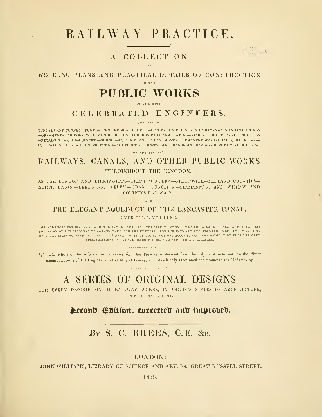Clann Mhór

The Blue Ridge Tunnel - the longest in the world?
When the Blue Ridge Tunnel finally opened to train travel in April of 1858, it was truly an amazing accomplishment. Workers hand drilled the hard rock for the blasts of black powder, then carted all the rubble to fill the embankments outside. Crews working from both ends made little monthly progress. Instead of the three years predicted, it took eight years of grueling work. It was a hard-earned achievement for Engineer Claudius Crozet, his assistants and the more than one thousand workers.
At the time it was also a well-recognized achievement. Newspapers as far away as New York had followed the slow progress of the work. The Richmond Whig cheered when the crews first “holed-through’ on December 29, 1856.
It took another sixteen months to finish expanding the chamber, removing all the rubble, and laying the track. But when the trains finally made the trip through the 4,273-foot-long tunnel, the Blue Ridge Mountains were successfully conquered. Instead of a long, slow climb in horse-drawn wagons, the trains, heavy with freight and passengers, easily made the trip over the mountains, connecting Richmond with the Great Shenandoah Valley and beyond.
When it opened, the Blue Ridge Tunnel was the longest tunnel in America. But was it the longest tunnel in the world? Not hardly, not even close. Many scholarly writers have made this mistake.
While many new railroad companies in America were madly laying tracks during the 1840’s and 1850’s, Great Britain had already gone through this initial building stage. First, the British companies took on the great task of extending miles of water canals across their countryside. Soon improvements to the steam engine led to the development of rail lines connecting their cities, ports and mining areas. The British engineers had already devised and improved different methods in digging canals and constructing locks, viaducts, culverts, bridges and tunnels.
Indeed, an engineering manual that is mentioned on Claudius Crozet’s expense account submitted in 1849, was Brees’ Railroad Practice, the second edition was published in 1838!
In this book, engineer Samuel Charles Brees presented a collection of working drawings and practical details of construction for various public works completed in Great Britain. It detailed and showcased the then “modern practices” of several esteemed civil engineers. Like all good engineers, Crozet educated himself on the many details and techniques that had been used successfully before him. While this knowledge clearly contributed to the construction of the Blue Ridge Railroad, it is curious to note that the expense report above shows that the railroad auditors in Richmond decided the book was a personal expense and deducted the $10.50 from Crozet’s reimbursement!
So again, the Blue Ridge Tunnel is 4,273 linear feet long. Below is a list of both canal and railroad tunnels in Great Britain that were longer and opened before the Blue Ridge Tunnel.
It should be noted that there was also a wagon tunnel built in 1842 that was 2.4 miles (12,672 feet) long under the town of Newcastle upon Tyne. This subterranean wagonway was built to carry coal from the mines, under the town, and down to the riverside wharf. The train of wagons ran on rails, the full wagons descending to the river under their own weight, then the empty wagons were pulled back up by a rope attached to a stationary steam engine.
Another canal tunnel, the Netherton Tunnel in West Midland was 9,081 feet long and opened in August 1858, just four months after the Blue Ridge Tunnel.
Also, the Higham Canal Tunnel and the Strood Canal Tunnel noted above are actually on the same canal line and separated by only 150 feet of open space. Thus the overall length of those combined tunnels was 11,580 feet. Even before the Blue Ridge Tunnel started construction, these canal tunnels were converted to train tunnels in 1845 as the newer railway technology was winning out.
Though there were much longer tunnels built in Great Britain, the Blue Ridge Tunnel was still quite a feat for Crozet and the many workers who labored six days a week, blasting their way a few feet at a time through the hard rock. Their triumph was a testament to future railroad builders that any mountain barrier could be overcome. After a lull during the American Civil War, the railroad industry boomed again, and longer tunnels were built with newer technologies at many locations across our country.
Of course, none of these compare to tunnels built in the last 50 years that include water supply tunnels up to 95 miles long, a 34 mile long metro/transit tunnel in China, the longest underwater tunnel extending more than 31 miles under the English Channel, and what will be the longest train tunnel in the world at 35.5 miles in length, currently under construction through the Swiss Alps.





Same tunnel shape used by Crozet


